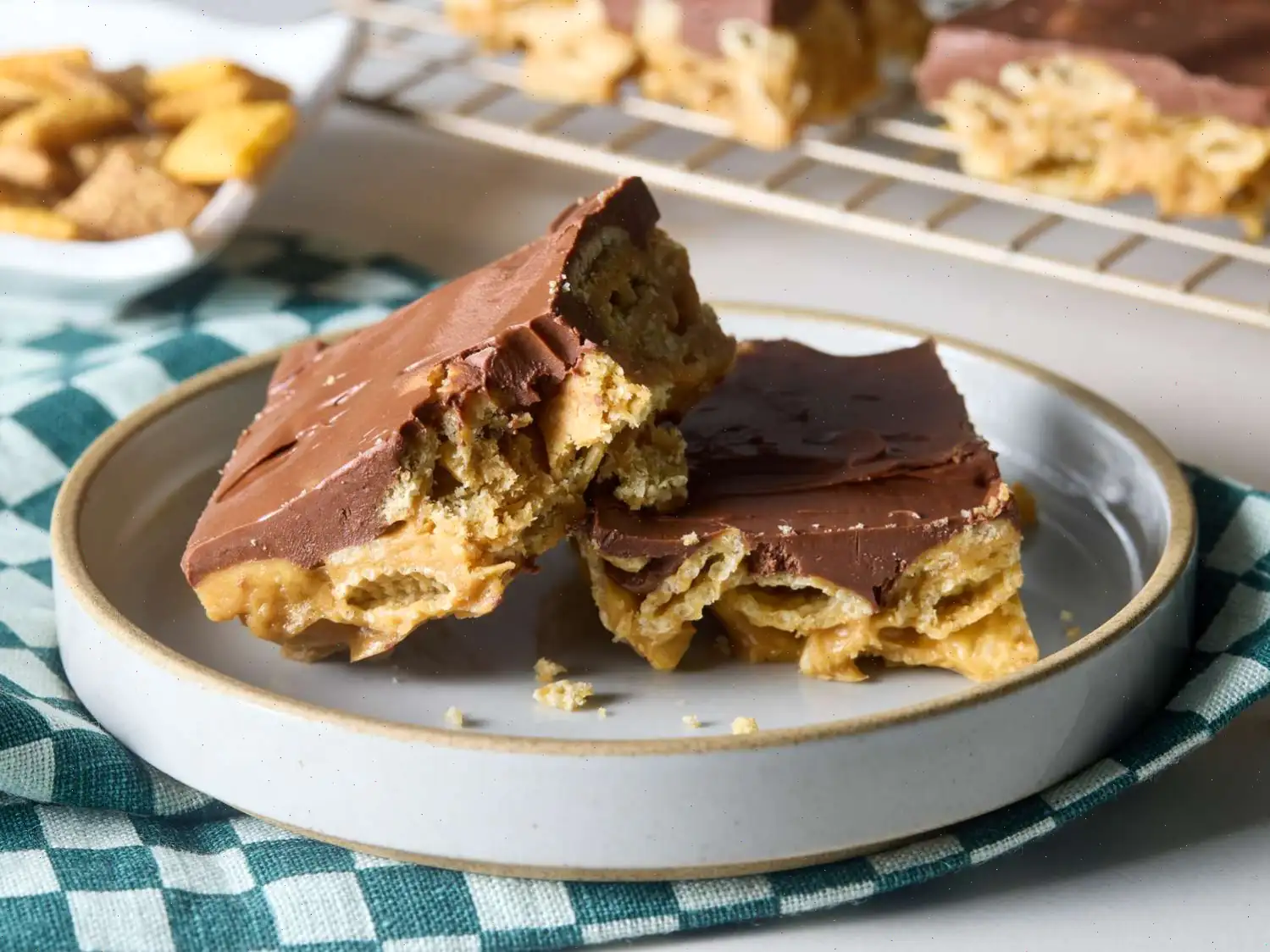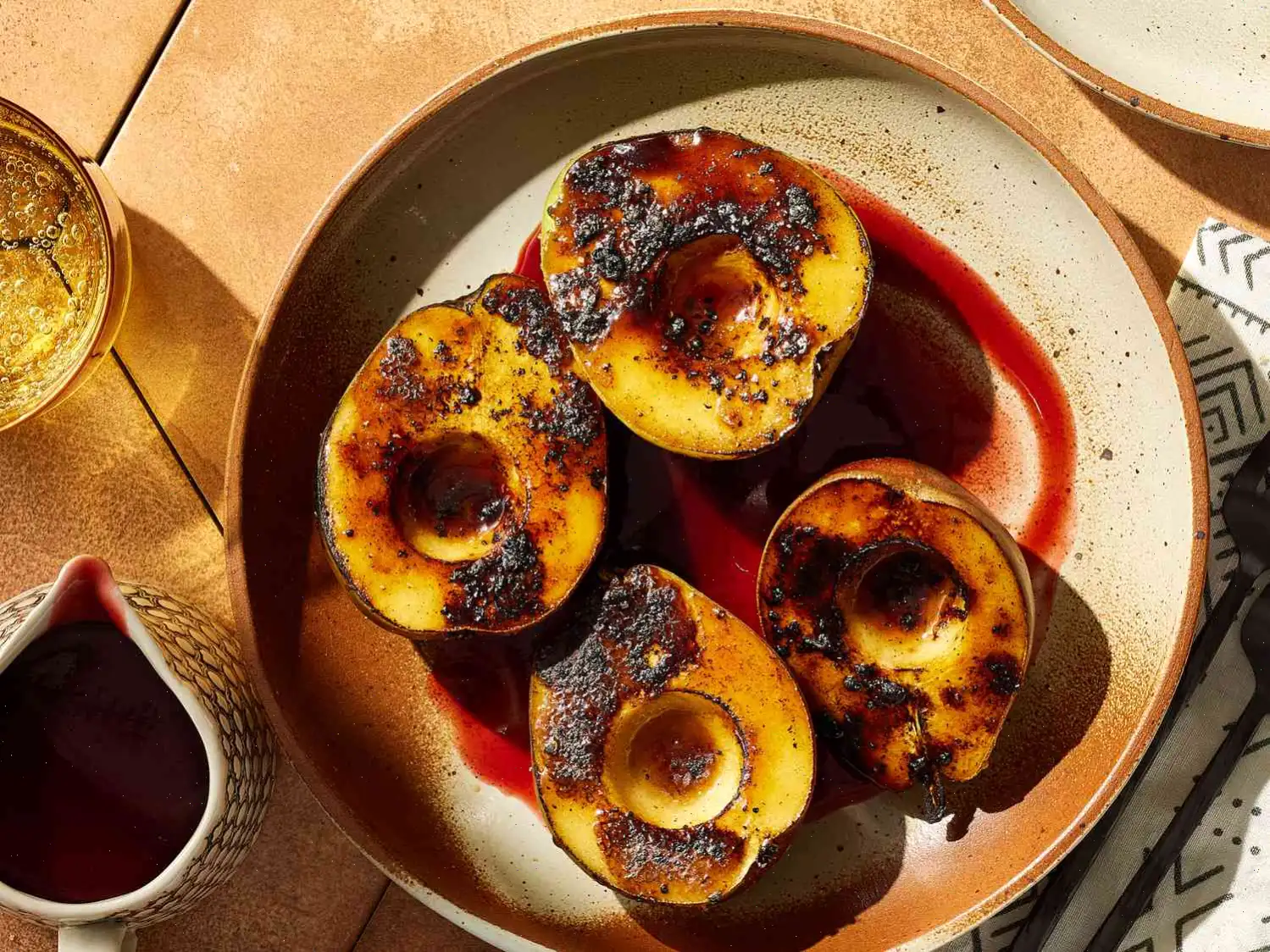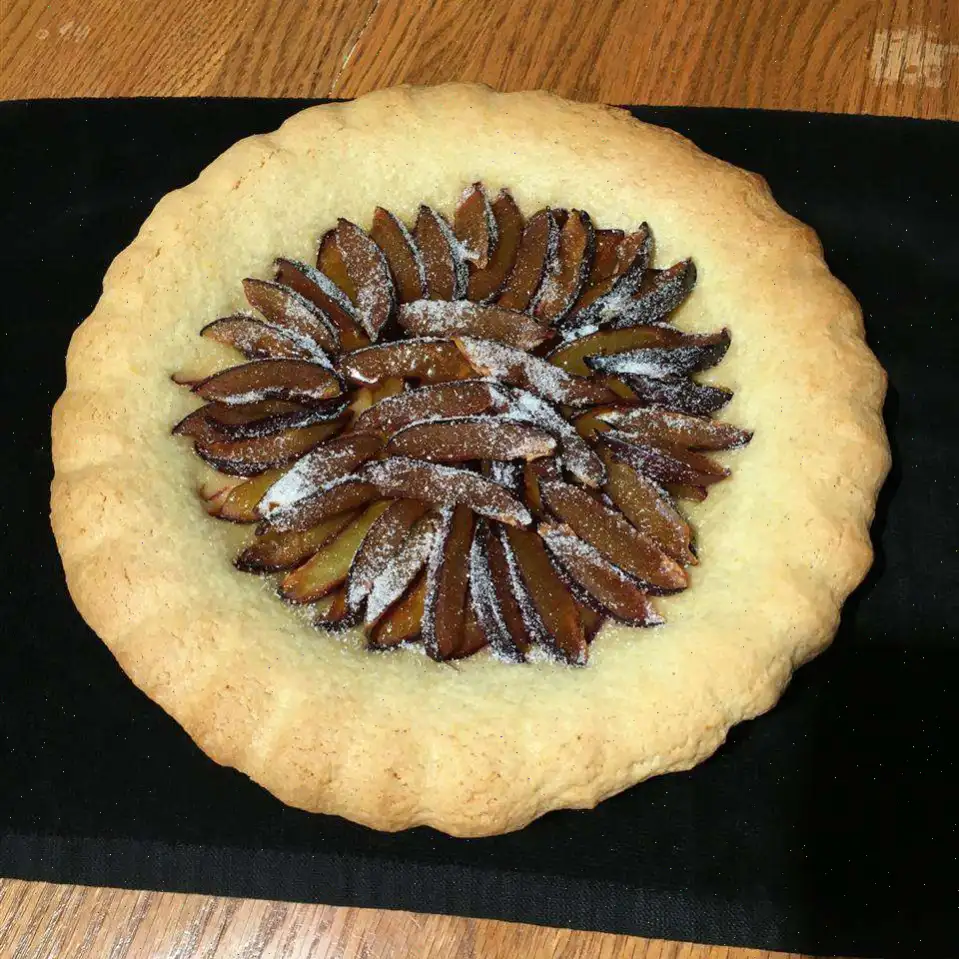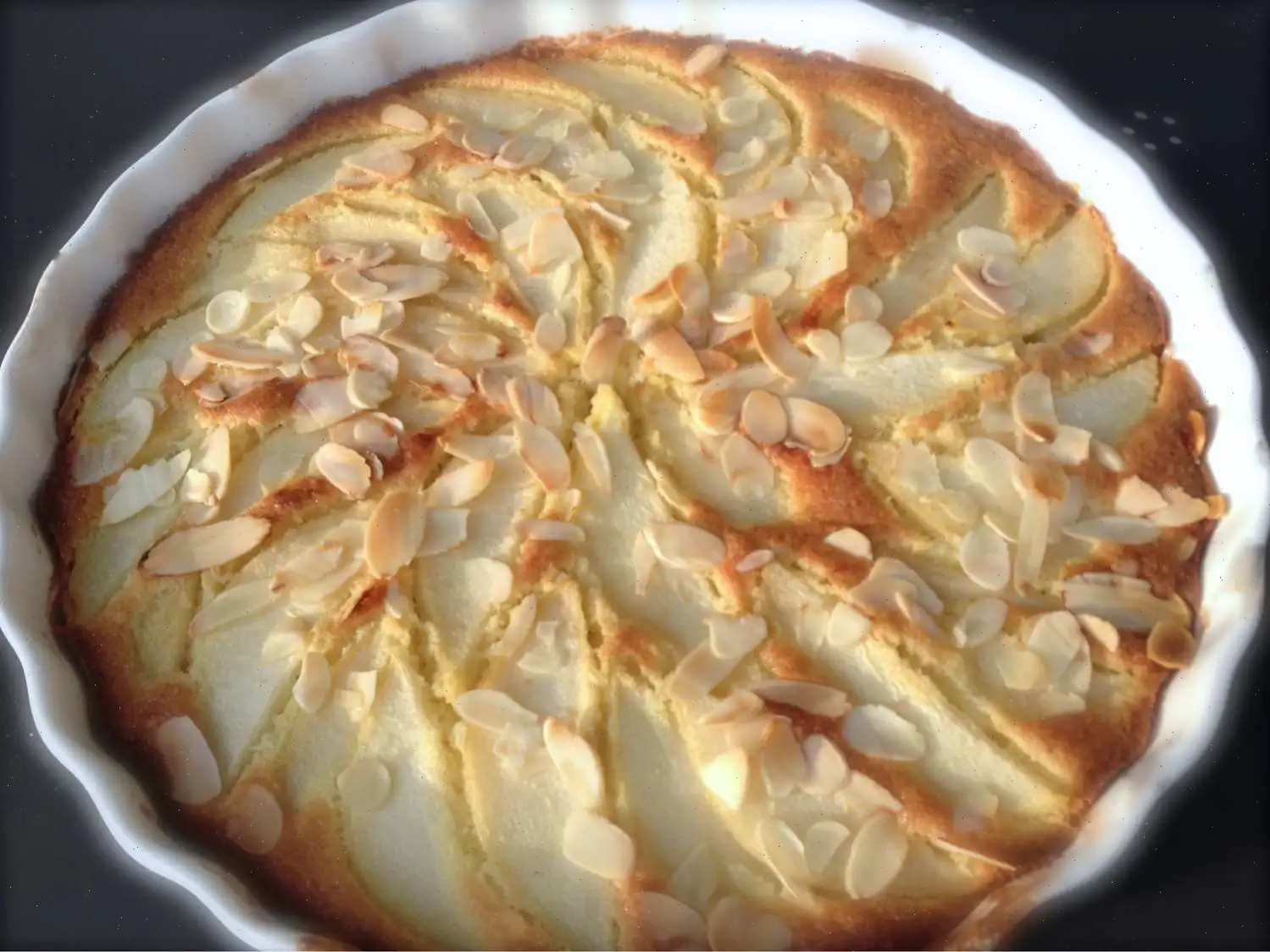
Holiday Lebkuchen (German Spice Cookies) Recipe
Ingredients
- 2 cups whole almonds
- Boiling water to cover
- cup chopped dried apricots
- 8 Medjool dates, pitted and chopped
- 4 cups unbleached all-purpose flour
- 1 tablespoon ground cinnamon
- 2 teaspoons ground ginger
- 1 teaspoons baking powder
- 1 teaspoon ground cloves
- teaspoon ground cardamom
- teaspoon salt
- 2 eggs
- 1 cup brown sugar
- 1 cup honey
- cup blackstrap molasses
- 1 tablespoon water
- 2 teaspoons almond extract
- 2 teaspoons grated orange zest
- 1 teaspoon grated lemon zest
- cup confectioners' sugar
- 2 tablespoons whole milk
- 1 teaspoon lemon zest
Directions
- Cover almonds with boiling water in a bowl. Let stand for 1 to 2 minutes, then drain. Rinse with cold water and drain again. Pat almonds dry and remove the skins. Allow almonds to dry on paper towels.
- Place half the almonds in a food processor and pulse until finely chopped. Add apricots and dates, then pulse again until the fruit is chopped. Set aside the remaining 1 cup of almonds.
- In a large bowl, combine the flour, cinnamon, ginger, baking powder, cloves, cardamom, and salt. Set aside.
- In another large bowl, beat the eggs, brown sugar, honey, molasses, water, almond extract, orange zest, and 1 teaspoon of lemon zest with an electric mixer until smooth.
- Incorporate the apricot mixture into the wet ingredients, blending until evenly distributed.
- Gradually add the flour mixture to the wet ingredients while mixing on medium speed until the dough comes together.
- Cover the dough with plastic wrap and refrigerate for at least 8 hours, or overnight.
- Preheat the oven to 350F (175C). On a lightly floured surface, roll out the dough to about inch thick.
- Cut out cookies using a 2 to 3-inch diameter cookie cutter. Arrange them about 1 inch apart on ungreased baking sheets.
- Lightly press 3 almonds into the center of each cookie, with the tips facing inward to create a star pattern.
- Bake in the preheated oven for about 12 minutes, or until the cookies begin to brown.
- Let the cookies cool in the pans for 10 minutes before transferring them to a wire rack to cool completely.
- While the cookies are cooling, whisk together the confectioners' sugar, milk, and 1 teaspoon of lemon zest in a bowl until smooth.
- Brush the warm cookies with the glaze, and let the cookies cool completely before serving.
Nutrition Facts (per serving)
| Calories | 188 |
|---|---|
| Total Fat | 5g (6%) |
| Saturated Fat | 0g (2%) |
| Cholesterol | 10mg (3%) |
| Sodium | 61mg (3%) |
| Total Carbohydrate | 35g (13%) |
| Dietary Fiber | 2g (7%) |
| Total Sugars | 20g |
| Protein | 4g (8%) |
| Vitamin C | 0mg (0%) |
| Calcium | 50mg (4%) |
| Iron | 1mg (8%) |
| Potassium | 168mg (4%) |

Origin and History of Lebkuchen
Lebkuchen, often referred to as German gingerbread, has a rich history that dates back to the Middle Ages. The cookies originated in the city of Nuremberg, Germany, a region famous for its spice trade. Historically, they were baked by monks in monasteries, who created these aromatic treats as a form of medicinal remedy for the winter months. The spices used in Lebkuchen, such as cinnamon, cloves, and nutmeg, were believed to have health benefits, especially for digestive and respiratory issues. Over time, Lebkuchen evolved from a medicinal food into a beloved holiday treat enjoyed across Germany and beyond.
Regional Variations
Lebkuchen varies widely depending on the region within Germany. In Nuremberg, the cookies are typically softer and often include a thin glaze or coating of sugar. The cookies from this region are often round and adorned with candied fruits or nuts. Other variations include the use of honey or molasses, which contributes to a more chewy texture. In contrast, northern German Lebkuchen tend to be more dense and less sweet, with an emphasis on the spiced flavor profile. Despite these differences, the essential spices and ingredients remain similar, creating a distinctive, aromatic taste.
What Sets Lebkuchen Apart from Similar Cookies?
While Lebkuchen shares similarities with other spiced cookies, such as gingerbread or speculaas, there are key distinctions. The use of honey and molasses gives Lebkuchen a unique sweetness and a softer texture compared to traditional gingerbread. The spices used in Lebkuchencinnamon, ginger, cloves, and cardamomare also more robust, offering a deeper, warmer flavor. Furthermore, the incorporation of dried fruits like apricots and dates in some recipes enhances the moistness and richness of the dough, setting Lebkuchen apart from other spiced cookies that tend to be drier.
Where is Lebkuchen Traditionally Served?
Lebkuchen is most commonly associated with the Christmas season in Germany. These spiced cookies are a staple of German holiday markets, especially at the world-famous Nuremberg Christkindlesmarkt, where vendors sell beautifully decorated Lebkuchen in various shapes and sizes. The cookies are also a popular gift during the holiday season, often packaged in decorative tins. In addition to Germany, Lebkuchen can be found in parts of Austria, Switzerland, and even the Netherlands, where they are enjoyed during various festive occasions and celebrations.
Interesting Facts About Lebkuchen
- In Nuremberg, Lebkuchen has a Protected Geographical Indication (PGI) status, ensuring that only cookies made in the region can be labeled as "Nuremberger Lebkuchen."
- Lebkuchen was originally baked by monks in monasteries, and the recipes were closely guarded secrets passed down through generations.
- Historically, the spices in Lebkuchen were expensive and used for medicinal purposes, adding an element of luxury and health benefits to the cookies.
- The star-shaped pattern created by pressing almonds into the cookies is a traditional decoration, often symbolizing the Christmas star.
- Lebkuchen can be made in a variety of forms, including soft, chewy varieties, crunchy versions, and even those dipped in chocolate or sugar glazes.
FAQ about Holiday Lebkuchen (German Spice Cookies) Recipe
Comments
Charles Anderson
01/21/2024 09:08:34 PM
I prepared these lebkuchen for my German class buddies. While I missed the taste of citron, which unfortunately wasn't available at the time, I decided to give apricots and dates a try. And oh boy, am I glad I did! These cookies turned out to be absolutely fantastic. My classmates couldn't get enough of them, they even asked to take some home. Needless to say, they were a big hit! I'm definitely planning to make another batch for Christmas. Thank you for sharing this amazing recipe! The only downside is that I didn't have the chance to let them sit for a day or two— I'm sure they would have tasted even better with time.
Christine Martin
10/29/2024 09:22:26 AM
These cookies are unlike any I have ever made before, and they are absolutely worth the effort. They are bursting with flavor, delightfully substantial, and visually appealing. The only downside is the time-consuming preparation involved, but it's a small price to pay for a special treat.







